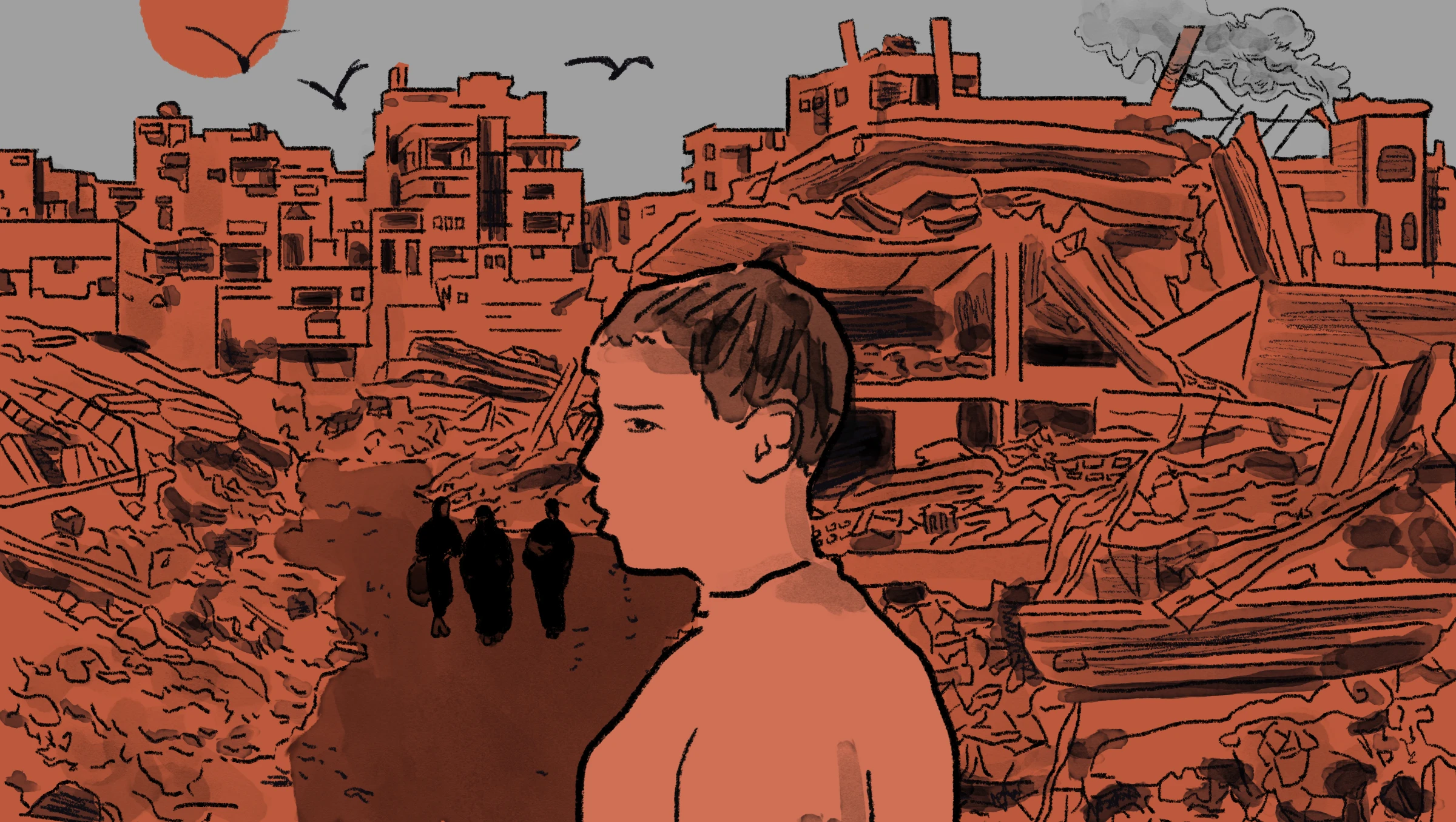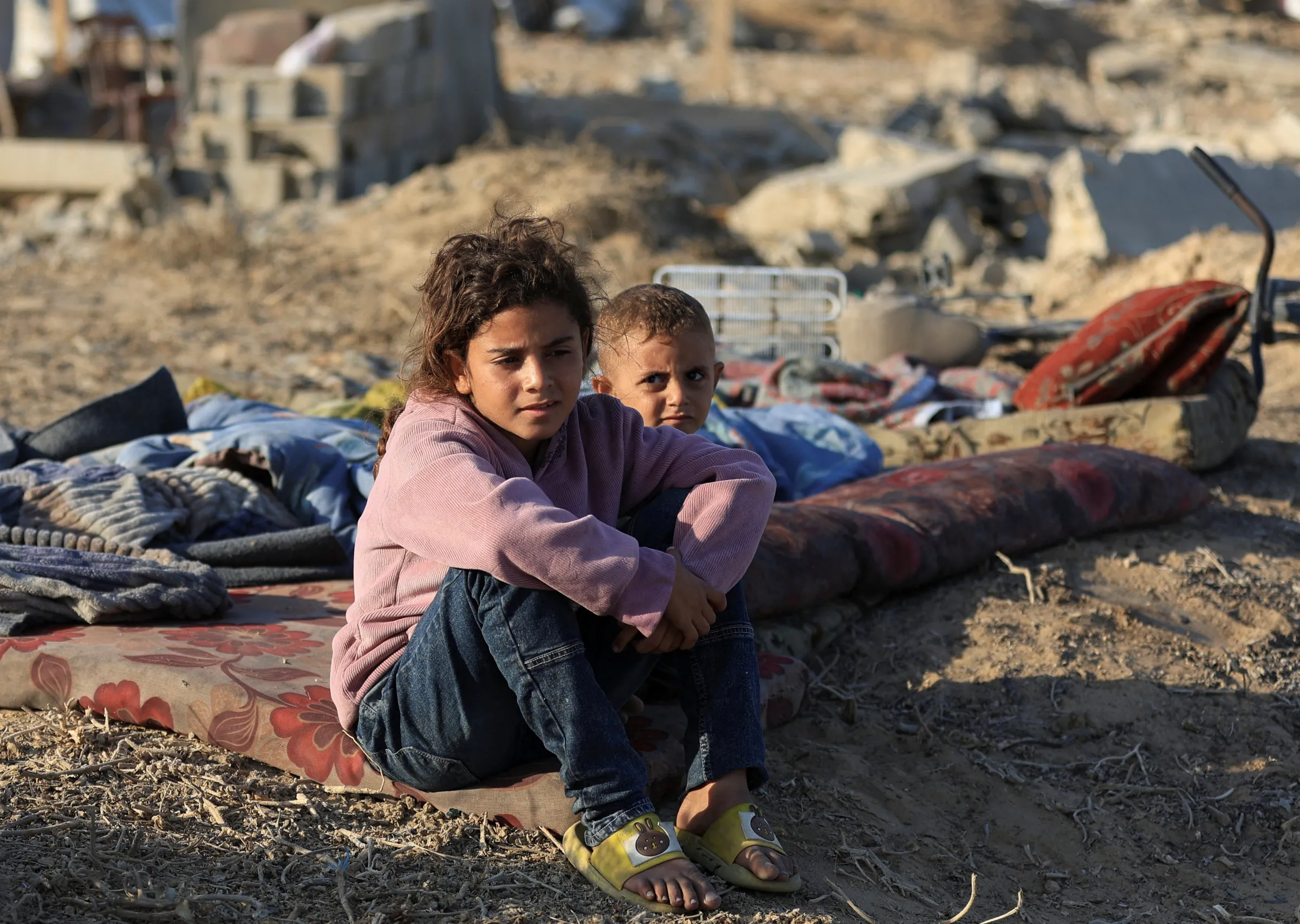One year of war in Gaza
By Nazih Osseiran
For a year, I have watched the Israel-Hamas conflict lay waste to Gaza and its people from my home in nearby Lebanon.
Like other international reporters, I have been forced to bear witness from the sidelines as the Israeli government has denied free access to Gaza for foreign journalists. And so my colleagues and I have relied on fragile phone lines to connect us to the people in Gaza to hear their stories and give voice to their concerns.
Now I feel conflict in the air: I smell it in the smoke and dust that envelop parts of the Lebanese capital Beirut after Israeli airstrikes.

A person looks over the ruins of Gaza in this illustration. Thomson Reuters Foundation/Karif Wat
A person looks over the ruins of Gaza in this illustration. Thomson Reuters Foundation/Karif Wat
The conflict has finally spread into Lebanon after being confined to the border regions for much of the past year. The Israel Defense Forces have begun a ground invasion, and everyone is wondering what comes next.
It feels like the prequel to a movie I have already watched. But that movie is still playing out in Gaza, where the death toll now stands at more than 41,600 people, according to Palestinian tallies.
One year ago, on Oct. 7, Hamas gunmen stormed into southern Israel, killing 1,200 people and capturing around 250 hostages, according to Israeli tallies. Israel launched a military offensive in Gaza in response. Now much of the enclave lies in ruins and most of the population of 2.3 million has been displaced.
In a series of stories to mark one year of conflict, we look at the mental toll on the people of Gaza, examine the role of Big Tech in the war and look at the price paid by Palestinian journalists, who have continued to report from the devastated enclave despite the dangers.












